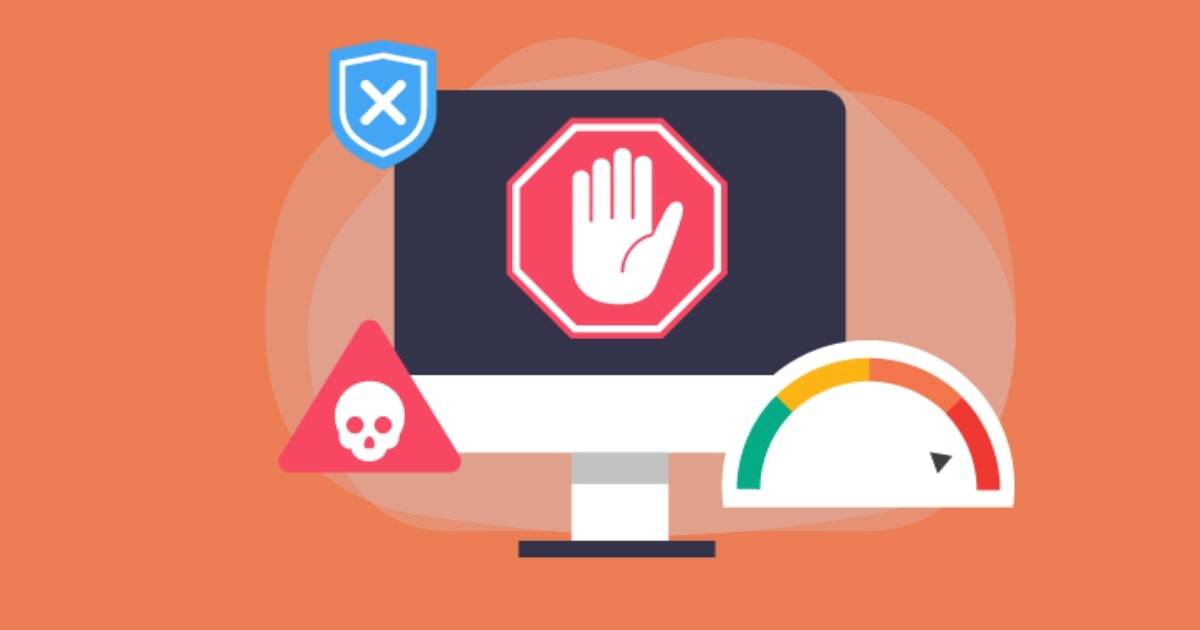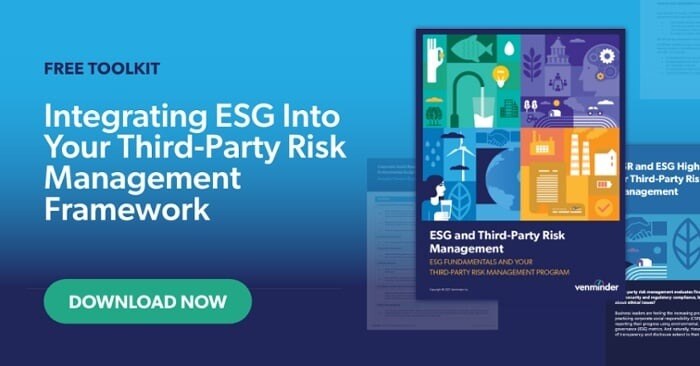How Modern Slavery and Human Trafficking Affect Your Vendor Risk
By: Hilary Jewhurst on July 20 2021
6 min read

Many people consider slavery as a sin of the past. Unfortunately, this notion is entirely out of step with reality. The International Labor Organization (ILO) has provided these staggering statistics:
- Over 40.3 million people worldwide live in some form of slavery today. This is more than any other point in human history.
- Seventy-one percent of enslaved people are women and girls.
- Twenty-five percent of enslaved people are children (approximately 10 million worldwide).
- Modern slavery produces an estimated $150 billion in profits annually.
Though very prevalent, it’s obscured by complex supply chains, multiple subcontracting relationships and unscrupulous third parties.
Whether it’s raw materials, manufacturing or construction, modern slavery and exploitation are rampant in supply chains worldwide. Consumers and businesses play a large part in the modern slavery dilemma which results from a constant desire for more goods at cheaper prices.
These goods can include something like the cotton used in clothing production that uses forced child labor to the highly sought-after mineral cobalt. There’s an increasing need for this mineral which is used for ion lithium rechargeable batteries that power laptops, cell phones and home solar energy systems. Most of the world's supply of cobalt originates in the Democratic Republic of Congo, where it’s mined by people, oftentimes children, who dig by hand. This laborious task is done without the use of industrial tools and with no safety equipment for little to no pay.
According to the US State Department, “modern slavery” “trafficking in persons” and “human trafficking” have been used as umbrella terms for the act of recruiting, harboring, transporting, providing or obtaining a person for compelled labor or commercial sex acts through the use of force, fraud or coercion.
Slavery and Human Trafficking Takes Shape in Many Forms
You may see the following forms of modern slavery and human trafficking:
- Domestic Servitude - Victims of domestic enslavement may appear to be maids, nannies or other domestic help. However, this type of work crosses the line into slavery when an employer restricts their movement, prevents them from leaving or confiscates travel papers. These workers become stuck inside a home with no power to walk away. In many cases, these workers-turned-slaves are beaten by the families they serve and work from many hours a day, often late into the night. Often, these individuals don’t speak the language of the country they are in, are fearful of immigration officials or cannot make contact outside of the home they serve. Migrant workers are also frequently vulnerable to domestic servitude situations because of a common practice that recruiting agencies use that tricks workers into moving abroad and then confiscates their documents.
- Forced Labor - This occurs when people are threatened with violence and forced to work without pay. Enslaved people are treated as property and exploited to create a product for commercial sale. Forced labor is common worldwide and is used to produce many products in our global supply chains. The fishing, textile, construction, mineral and agriculture industries are particularly laden with forced laborers.
Forced labor can also be found in a variety of authoritative groups including state and rebel governments, military or rebel armed forces and state prisons or convict leasing programs. It’s also considered slavery when public governments exploit individuals for their own gain. At least 2.2 million people are victims of forced servitude, which includes child soldiers. - Sex Trafficking - Women, men or children are forced into the commercial sex industry and held against their will by force, fraud or coercion.
- Bonded Labor - Bonded labor is the most common form of modern slavery. In this case, individuals are compelled to work to repay a debt and unable to leave until the debt is repaid. Workers are tricked into debt by paying fees to secure a job (also known as recruitment fees). The workers are forced to sign contracts they don’t understand and are paid meager sums by the employer. The employer then claims the worker's wages are needed to pay off debts, food, and accommodations, making it virtually impossible to repay the original debt.
- Child Labor - This describes enslavement of a child, whether by forced labor, domestic servitude, bonded labor, sex trafficking or use of child soldiers.
- Forced Marriage - Women and children who are forced to marry without their consent or against their will are victims of this type of slavery. This occurs when people essentially sell their family members into forced marriage. Sometimes, women and children may be offered for marriage to repay a debt or in exchange for goods.
Considering Modern Slavery and Mapping Supply Chain Risks
Now that you understand what modern slavery is and the different forms it can take, it’s important to know that your vendors and supply chain may put your organization at risk.
Keep in mind that most of the risk is intentionally hidden, and it’s unlikely that you’ll identify these risks with your direct third-party vendors. Mapping the supply chain, end-to-end, for each product is the best way to uncover the risks.
However, recent studies show that only 35% of Fortune 500 companies have actually mapped their supply chains for these risks. The percentage of the non-public or smaller organization is surely even lower. The process can be very complicated and takes time, but there are still steps you can take to start addressing some of the risks. Let's take a look.
- First and foremost, get educated! There are several reputable organizations that provide extensive information on these topics. The International Labor Organization (ILO) and Walk Free are good starting points.
- Learn about your organization's position related to modern slavery and trafficking. Many organizations have yet to formally address these concerns. You may find that you are the first to raise the issue. In that case, make sure to incorporate the right stakeholders in that discussion, including Sourcing/Procurement or Supply Chain Management, Legal, Public Relations and Compliance. It’s a best practice to identify the standards your organization will hold themselves accountable to first before asking vendors to do the same.
- Review your third-party list for potential risk areas. Keep in mind that your direct third parties that rely on complex supply chains and multiple subcontracting relationships should be at the top of your list for review and evaluation.
- Identify the products and vendors you use in the following categories, as these are commonly associated with modern slavery and trafficking:
- High-tech
- Steel
- Automobiles
- Agriculture and seafood
- Mining and minerals
- Garments and textiles
- Shipping and transportation
- Tourism and hotels
- Construction
- Survey your vendors to determine if they’re actively taking any steps to identify, prevent, mitigate or report on modern slavery and human trafficking risks. Knowing these details will be useful in determining appropriate planning for the next steps.
- Update or issue a Supplier Code of Conduct that specifically includes standards related to slavery and trafficking. These standards should apply to every vendor in the supply chain and may include the following:
- Responsibility for their end-to-end supply chain and requirements to identify and mitigate modern slavery and trafficking risk.
- Whistleblowing mechanisms (hotline, email address, physical address, independent inspectors, etc.) where workers can safely and effectively raise issues and report abuses.
- Forbiddance of recruiting fees or any practices that are intended to withhold worker wages and are based on repaying debts which are assessed by the employer without the worker's consent.
- All vendors in the supply chain must adhere to The UN Protocol to Prevent, Suppress and Punish Trafficking in Persons, Especially Women and Children, supplementing the United Nations Convention against Transnational Organized Crime. This document was adopted in 2000 and is known as one of the "Palermo Protocols," which defines trafficking as "the recruitment, transportation, transfer, harboring or receipt of persons … for the purpose of exploitation".
Of course, there’s so much more that can and should be done to ensure that vulnerable people are not exploited to produce goods and services. As long as the heinous crimes of modern slavery and human trafficking exist, the commitments and actions of governments and businesses both in the private and public sectors are instrumental in eradicating these practices. Your organization is taking vital first steps as part of the solution just by making the decision to be aware, set internal and external standards, work on mapping your supply chain. And most of all, to hold yourselves accountable.
Integrating ESG into your third-party risk management framework in the near future is inevitable. Download this toolkit to learn more.
Infographic
Donec nec justo eget felis facilisis fermentum. Aliquam porttitor mauris sit amet orci.

Related Posts
Vendor Risk Management and ESG: Forced Labor, Modern Slavery, and Human Trafficking in Your Supply Chain
Over the past few years, regulators and consumers have intensified the focus on ESG (environmental,...
Identifying and Assessing Vendor ESG Risk
You may be familiar with the term ESG, which represents the environmental, social, and governance...
Uyghur Forced Labor Prevention Act: How Retail & Others Can Use TPRM to Manage Risk Exposure
A new law aimed at curbing forced labor in China could have serious repercussions for American...
Subscribe to Venminder
Get expert insights straight to your inbox.
Ready to Get Started?
Schedule a personalized solution demonstration to see if Venminder is a fit for you.


















.gif?width=1920&name=Sample-Graphic-Animation%20(1).gif)















